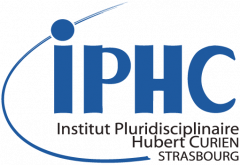Speakers: Kenneth Long (Massachusetts Institute of Technology (MIT))
Particle masses and the coupling strengths of the forces are fundamentally experimental parameters that must be measured and input into the standard model of particle physics (SM). While the SM does not predict their values, it does predict precise relationships between them. Physics beyond the standard model can change these relationships through the effects of virtual particle quantum loops, thus making it of paramount importance to measure these parameters with the highest possible precision. While the mass of the Z boson is known to the remarkable precision of nearly 20 parts per million, thanks to the CERN LEP experimental program, the W boson mass is known much less precisely. Furthermore, the most precise measurement of the W boson mass, performed by the CDF Collaboration at Fermilab in 2022, is in significant tension with the standard model expectation from indirect measurements. Recently, the CMS Collaboration at the LHC has performed its first measurement of the W boson mass. The measurement is based on a sample of W boson events decaying to a muon and a neutrino, with the results obtained via a highly granular maximum likelihood fit to the kinematic distributions of the muons. The significant in situ constraints of theoretical inputs and their corresponding uncertainties provided by this novel approach, together with an accurate determination of the experimental effects, lead to a very precise W boson mass measurement, 80360.2 +/- 9.9 MeV. The result is in agreement with the standard model prediction and in tension with the measurement of the CDF Collaboration. I will discuss the measurement procedure and the experimental and theoretical advancements that enabled this striking result.
https://indico.in2p3.fr/event/34186/
Début : 29/11/2024 à 11:00
Fin : 29/11/2024 à 13:00
Prochains évènements
Retour à l'agendaSeminaire DRS: DAMIC-M / skipper CCD
Speakers: Xavier Bertou (IJCLab) https://indico.in2p3.fr/event/38024/
Belle II International Masterclasses 2026 (Strasbourg, France)
Quizz : https://belle2.ijs.si/masterclass/quiz.php Vidéos pédagogiques : L'expérience Belle II (8', en Anglais) : http://www1.phys.vt.edu/~piilonen/movies/KEK_eng_short_1029.mp4 One day with a particle physicist (30', en Anglais) : https://www.youtube.com/watch?v=e0Lv2GrsXig&feature=youtu.be Tour of the Belle II experiment (10', en Anglais) : https://istnazfisnucl-my.sharepoint.com/:v:/g/personal/forti_infn_it/EdXqH1QSVjdLnBD8pIiAJL0BPc3eD4dpxuyi8XhgxLbb2Q Display de collisions de Belle II : https://evdisp.belle2.org/ Quelques photos des Masterclasses Belle II 2023 : https://seafile.unistra.fr/d/42b467a0dbae4d40b193/ https://seafile.unistra.fr/d/42b467a0dbae4d40b193/ https://indico.in2p3.fr/event/37591/
